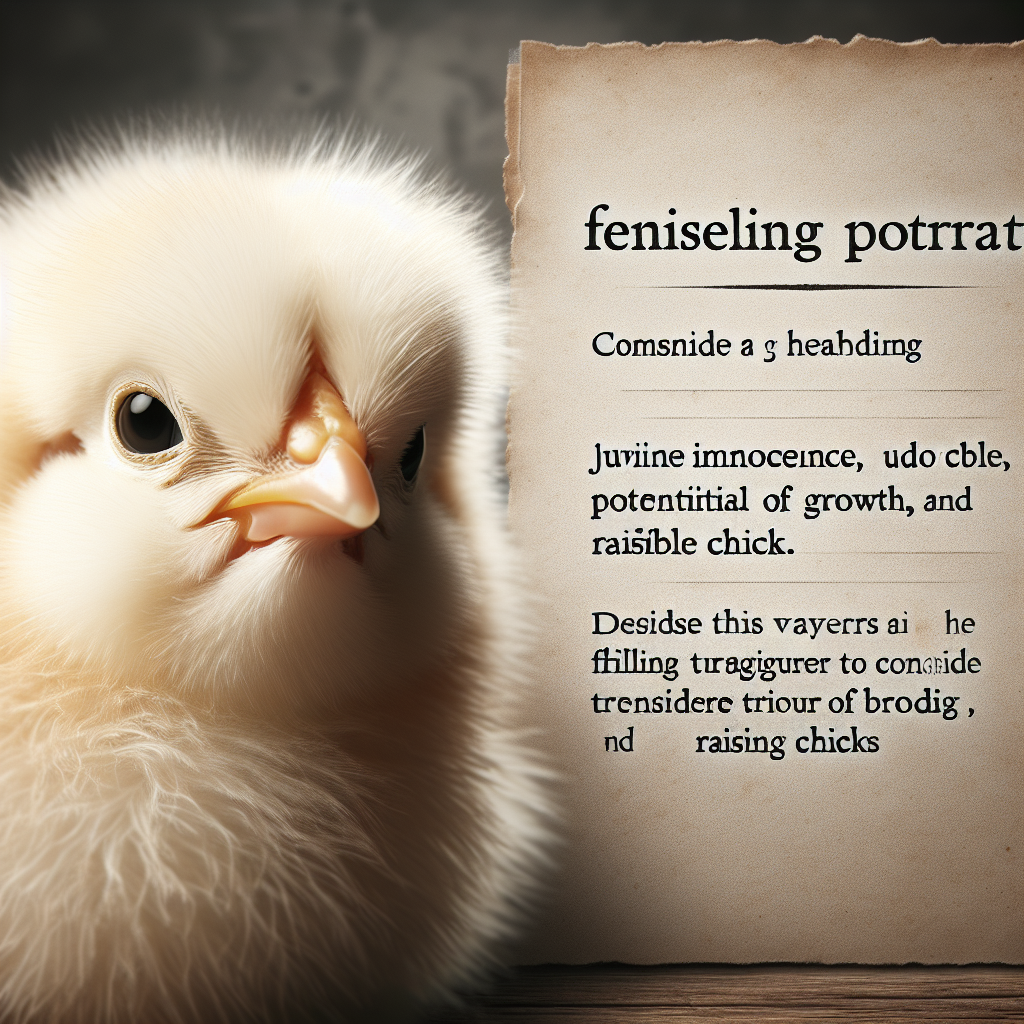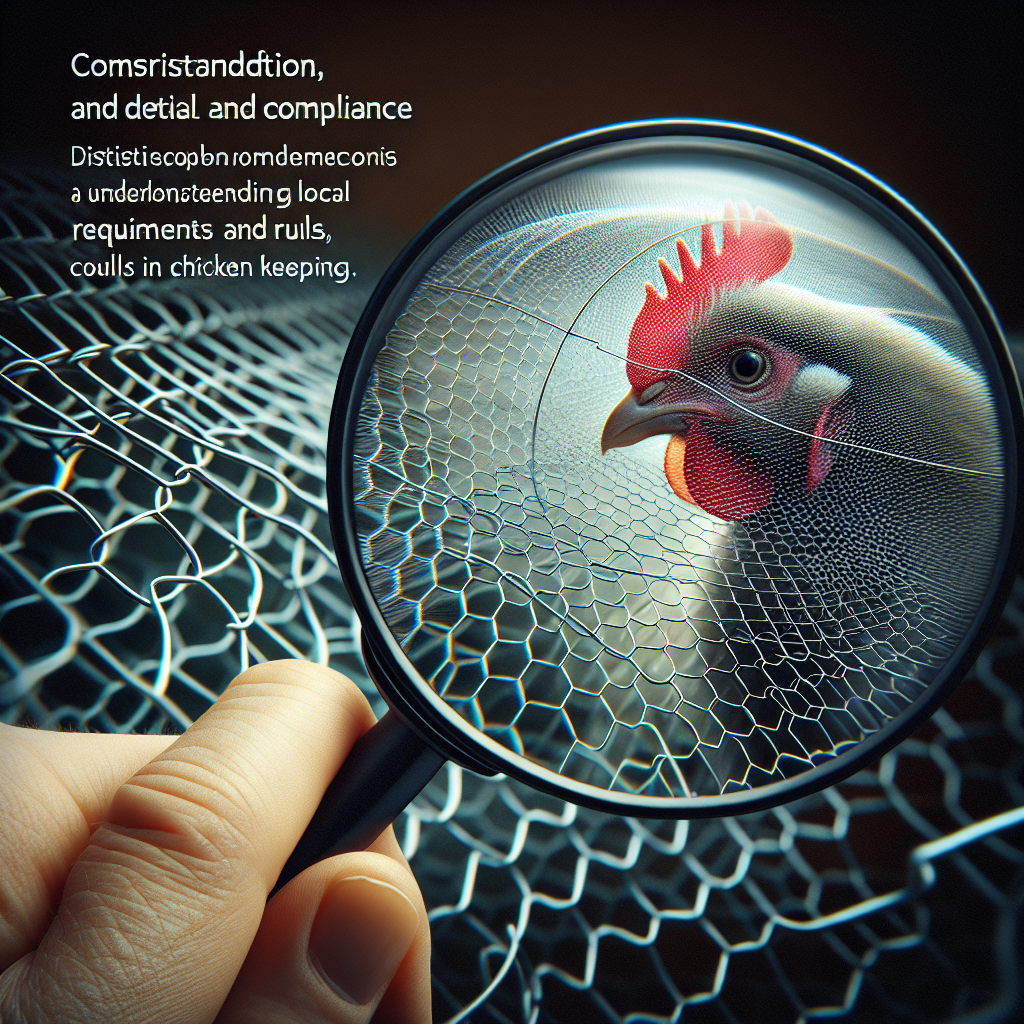Are you a beginner in the world of brooding and raising chicks? If so, you’re in the right place! This article will provide you with the essential information you need to get started. Whether you’re considering raising chicks for eggs or as pets, we’ll cover the basics from setting up a brooder to feeding and caring for your adorable fluff balls. So, get ready to embark on this exciting journey of brooding and raising chicks, and gain the knowledge and confidence to give them the love and care they deserve.
Choosing the Right Breed
Determining your Purpose
When considering raising chicks, it’s important to determine your purpose for doing so. Are you looking for fresh eggs for your family? Or are you interested in breeding and showing chickens? Different breeds have different characteristics and purposes. Some breeds are excellent layers and will provide you with a steady supply of eggs, while others are known for their meat quality. Take some time to research breeds and choose the one that aligns with your goals and preferences.
Considering Climate and Space Requirements
Another important factor to consider when choosing a breed is the climate and space requirements. Some breeds are more suited for cold climates, while others thrive in warmer environments. Consider the average temperature and weather conditions in your area and choose a breed that can withstand those conditions. Additionally, think about the space you have available for raising chickens. Some breeds are more suitable for smaller backyard setups, while others require more space to roam and forage.
Researching Different Breeds
Once you have determined your purpose and considered the climate and space requirements, it’s time to research different breeds. Look into the characteristics, temperament, and care requirements of various breeds. Consider factors such as egg-laying capabilities, size, and temperament. There are plenty of online resources and breed guides available to help you make an informed decision. Take your time and choose a breed that fits your lifestyle and preferences.
Preparing the Brooder
Selecting the Right Location
Creating a suitable brooder is crucial for the health and well-being of your chicks. When choosing a location for your brooder, consider factors such as temperature, ventilation, and noise level. Select a quiet area of your home or backyard that is easily accessible. Avoid placing the brooder in areas that are prone to drafts or direct sunlight, as these conditions can be harmful to the chicks.
Creating the Ideal Temperature
Maintaining the ideal temperature is essential for the chicks’ growth and development. For the first week, the brooder temperature should be kept at around 95°F (35°C). You can use a heat lamp or a brooder plate to provide heat. As the chicks grow, gradually decrease the temperature by 5°F (2°C) every week until it reaches the ambient room temperature.
Setting Up Bedding and Nesting Materials
With the location and temperature sorted, it’s time to set up the bedding and nesting materials in the brooder. Use materials such as pine shavings or straw to create a soft and comfortable environment for the chicks. Make sure to keep the bedding clean and dry to prevent any health issues. Additionally, provide nesting materials such as paper towels or shredded paper to encourage the chicks to start exhibiting natural nesting behaviors.
Feeding and Watering
Providing the Correct Feed
Feeding your chicks with the right feed is crucial for their growth and overall health. Start by providing them with a high-quality chick starter feed, which is specifically formulated to meet their nutritional needs. The feed should contain a balanced amount of protein, vitamins, and minerals. Avoid giving them adult chicken feed, as it may not have the necessary nutrients for their development. As the chicks grow, gradually transition them to a grower feed suitable for their age.
Introducing Grit and Treats
In addition to their regular feed, chicks also benefit from the introduction of grit and treats into their diet. Grit aids in the digestion of their food by grinding it in their gizzard. Provide them with fine grit, such as sand or crushed oyster shells, in a separate container. As for treats, offer them small amounts of fresh fruits, vegetables, or cooked eggs. Remember to introduce treats gradually and in moderation to avoid disrupting their balanced diet.
Ensuring a Constant Water Supply
Water is essential for the chicks’ hydration and overall well-being. Provide them with clean, fresh water at all times. Use shallow waterers or chick-specific waterers to prevent drowning. Check the waterers regularly to ensure they are clean and functional. Monitor the chicks’ water consumption and refill the waterers as needed. Maintaining a constant water supply is vital for their growth and development.
Managing Health and Hygiene
Maintaining a Clean Brooder
Keeping the brooder clean is essential for preventing the spread of diseases and maintaining the chicks’ health. Regularly remove any soiled bedding and replace it with fresh bedding. Wipe down surfaces with a mild disinfectant to kill any bacteria or pathogens. Check the brooder for any leaks or drafts and make necessary repairs. Good hygiene practices will help ensure a clean and safe environment for the chicks.
Monitoring Chicks’ Health
Regularly monitor the chicks’ health to catch any potential issues early on. Observe their behavior, appetite, and overall appearance. Healthy chicks should be active, curious, and have bright eyes. Any signs of lethargy, reduced appetite, or abnormal behaviors should be addressed promptly. If you notice any concerns, consult a veterinarian experienced in poultry care for guidance and treatment options.
Dealing with Common Health Issues
Despite your best efforts, chicks may still encounter common health issues. Some common health problems in chicks include pasty butt, respiratory infections, and coccidiosis. Educate yourself about these common issues and the signs to look out for. Take preventive measures such as providing a clean and dry environment, maintaining proper nutrition, and implementing good biosecurity practices. If health issues arise, consult a veterinarian for guidance on treatment options.
Gaining Trust and Handling Chicks
Spending Time with Chicks
Building a bond and gaining the trust of your chicks is an important aspect of raising them. Spend time with them daily, observing and interacting with them from a distance. This will help them become familiar with your presence and voice. The more time you spend around them, the more comfortable they will become.
Introducing Your Hand
Once the chicks are comfortable with your presence, start introducing your hand into the brooder. Extend your hand slowly and allow the chicks to investigate and peck at it. Move your hand gently and speak softly to them, establishing a sense of familiarity and trust.
Gradually Picking Up and Holding Chicks
As the chicks become more comfortable with your hand, you can start picking them up and holding them. Use a gentle and calm approach, supporting their body properly. Start with short holding sessions and gradually increase the duration. Avoid sudden movements or loud noises, as they can startle the chicks. Regular handling and gentle interaction will help the chicks become more accustomed to human contact.
Developing a Routine
Establishing a Feeding Schedule
Establishing a consistent feeding schedule is beneficial for both you and the chicks. Determine the appropriate frequency and timing for their meals based on their age and development stage. Stick to the schedule and provide their feed at the same time each day. This routine will help the chicks adjust to a regular feeding pattern and promote healthy eating habits.
Creating a Sleeping Routine
Chicks need adequate sleep for their growth and development. Create a sleeping routine by maintaining a consistent light and dark cycle in the brooder. Use a timer to ensure that they have enough darkness for restful sleep. Avoid disturbing them during their designated sleeping hours. Establishing a sleeping routine will contribute to their overall well-being and promote healthy sleep patterns.
Introducing Regular Supervision
Regular supervision is important to monitor the chicks’ progress and ensure their well-being. Take the time to observe their behavior, interactions, and overall health. Make note of any changes or concerns and address them promptly. Regular supervision allows you to develop a deeper understanding of their individual needs and identify any areas that may require adjustment in their care routine.
Transitioning to the Coop
Building or Preparing the Coop
Before transitioning the chicks to the coop, it’s essential to have a suitable space ready for them. Build or prepare a coop that meets their space requirements and offers protection from predators and the elements. Ensure that the coop has proper ventilation and adequate nesting and roosting areas. Provide a clean and comfortable environment for the chicks to transition to.
Gradually Introducing Chicks to the Outdoors
Allow the chicks to gradually adapt to the outdoors by introducing them to a controlled outdoor space. Start with short supervised outdoor sessions, gradually increasing the duration over time. Ensure that the chicks have access to shade, fresh water, and protection from predators during their outdoor time. This gradual process will help them adjust to the outdoor environment safely.
Monitoring Chicks’ Adaptation to the Coop
Once the chicks are accustomed to spending time outdoors, it’s time to transition them to the coop. Monitor their adaptation closely during this transition period. Ensure that they are comfortable and secure within the coop environment. Observe their behavior and interactions with the coop structure and other chickens. Make any necessary adjustments or improvements to the coop based on their needs and behaviors.
Integrating Chicks with Adult Chickens
Introducing Chicks and Adults in Neutral Territory
When integrating chicks with adult chickens, it’s crucial to introduce them in neutral territory. This prevents territorial disputes and reduces the chances of aggression or injury. Choose an area outside of the coop where both the chicks and adult chickens can interact without feeling threatened. Observe their interactions closely to ensure a smooth integration process.
Supervising the Interaction
During the integration process, keep a close eye on the interactions between the chicks and adult chickens. Monitor for any signs of aggression or bullying. It’s normal for some pecking and establishing of the pecking order to occur, but intervene if any excessive aggression or harm is being inflicted. Provide additional hiding spots or barriers if necessary to ensure the safety and well-being of the chicks.
Ensuring the Safety of Chicks
As the integration progresses, it’s crucial to ensure the safety of the chicks in the presence of adult chickens. Keep a watchful eye on their interactions and intervene if necessary. Provide separate feeding and watering areas to minimize competition and potential bullying. Gradually increase the time the chicks spend with the adult chickens, allowing them to integrate while maintaining a safe and secure environment.
Ensuring Safety and Security
Protecting Chicks from Predators
Predators pose a significant threat to the safety of your chicks. Take necessary precautions to protect them from potential predators such as raccoons, foxes, and hawks. Secure the coop and run with predator-proof fencing and wire mesh. Cover the top of the run to prevent aerial attacks. Implement measures such as automatic closing doors and secure latches to deter any potential entry by predators.
Securing the Coop and Run
Aside from protecting against predators, it’s important to secure the coop and run to prevent any escape or unwanted entry. Regularly inspect the coop for any loose or damaged areas that could provide an opportunity for escape or predator access. Ensure that doors and windows are properly secured at all times. Keep an eye out for signs of wear and tear and promptly address any maintenance issues to maintain a secure and safe environment.
Implementing Biosecurity Measures
Biosecurity is crucial to prevent the spread of diseases and maintain the health of your flock. Implement biosecurity measures by practicing good hygiene, limiting visitors to the flock, and regularly disinfecting equipment, tools, and footwear. Quarantine any new birds before introducing them to your existing flock to prevent the spread of potential diseases. By being proactive in implementing biosecurity measures, you can help protect the health and well-being of your chicks and adult chickens.
Monitoring Growth and Development
Observing Feather Growth
Observing feather growth is an important aspect of monitoring the development of your chicks. Pay attention to the shape, color, and size of their feathers as they grow. Feathers play a crucial role in regulating body temperature and protecting the chicks from the elements. Monitor the development of their feathers as they transition from downy fluff to mature plumage.
Assessing Physical Changes
In addition to feather growth, assess other physical changes in the chicks as they grow. Monitor their overall size, weight gain, and muscle development. Healthy chicks should exhibit steady growth and physical development. Any significant changes or abnormalities should be noted and addressed promptly.
Tracking Growth Milestones
Tracking growth milestones can provide valuable insights into the development of your chicks. Keep a record of their weight, height, and other growth milestones at regular intervals. This information can help you determine if the chicks are developing as expected and enable you to identify any potential issues early on.
Raising chicks can be a rewarding and enjoyable experience, especially for beginners. By following these basic steps and guidelines, you can ensure the health, well-being, and successful development of your chicks. Remember to research, prepare, and provide the necessary care and attention they need. With patience and dedication, you’ll witness your chicks grow into healthy and happy adult chickens.




